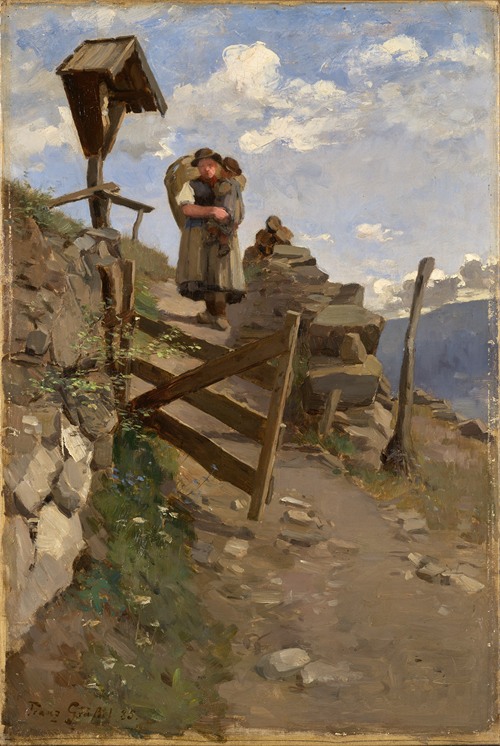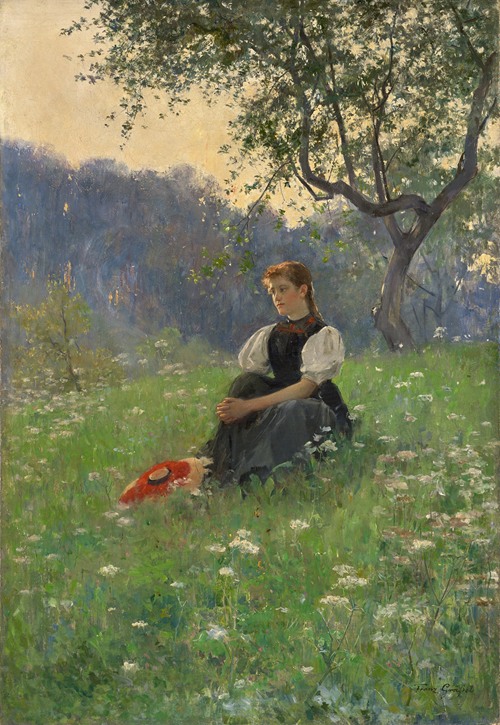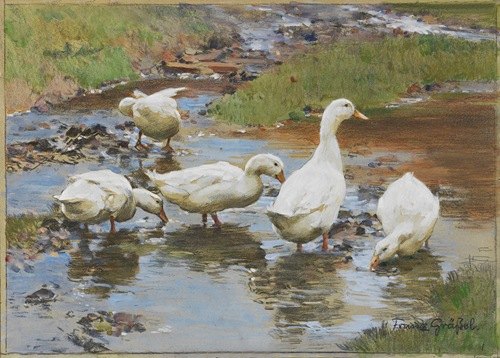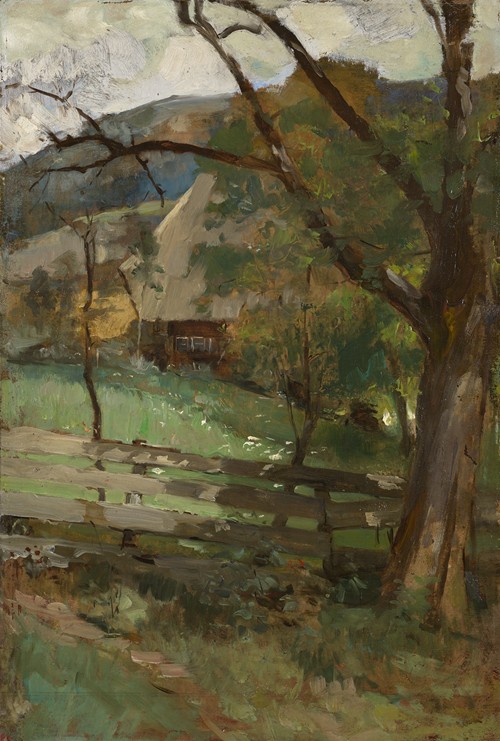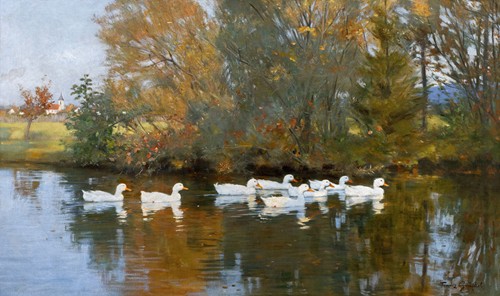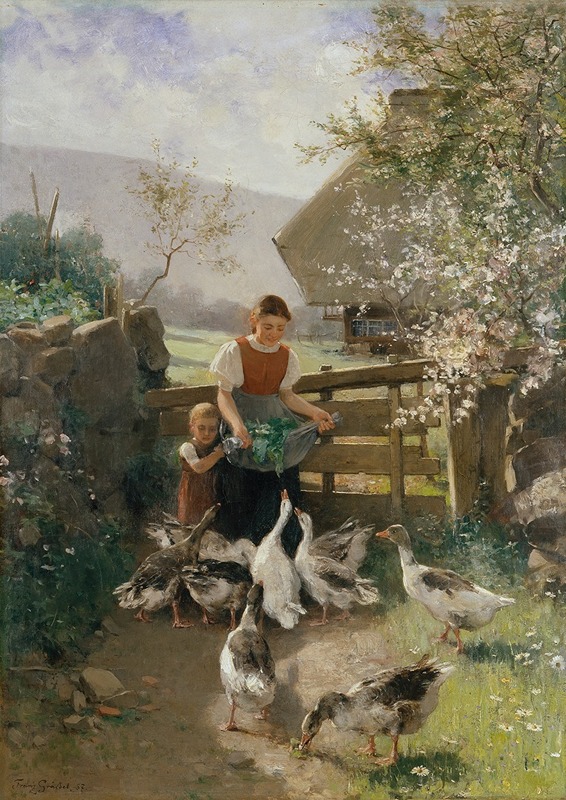
Franz Xaver Gräßel was a German painter who became known primarily as a genre painter.
Gräßel grew up on a mill near Obersasbach and initially attended a secondary school in neighboring Achern. From 1878 to 1884, he studied at the Academy of Fine Arts in Karlsruhe under Conrad Hoff until he reached the master's level, where he mainly focused on genre and portrait painting.
In 1885 he was appointed teacher at the St. Stephan grammar school in Strasbourg. From 1886 to 1890, following study trips, he continued his studies with Wilhelm von Lindenschmit at the academy in Munich.
In the 1880s, his paintings of local rural motifs predominated. Because of his preference for the peasant genre and for poultry, he was known as the "duck painter". However, Gräßel also cultivated portrait and landscape painting.
From 1900, he lived in Emmering near Fürstenfeldbruck, where a number of artists who became known as "Brucker Maler" had settled. In 1901, he married Wilhelmine "Minna" Auguste Müller (1850-1931). In 1911, Gräßel was appointed Royal Academy Professor at the Academy of Fine Arts in Munich by Prince Regent Luitpold. When the Brucker Künstlervereinigung was founded in 1924, Gräßel became its honorary chairman.
Gräßel joined the NSDAP on August 1, 1932 (membership number 1.201.290). He was represented at the Great German Art Exhibition in Munich in 1938, 1939 and 1940 with four oil paintings. Of these, Hitler purchased Enten am Bach and Ein Herbsttag im Dorf in 1938 and Joseph Goebbels Bei der Arbeit in 1939.
